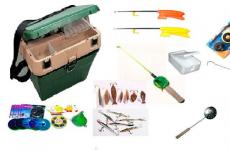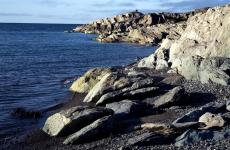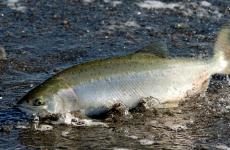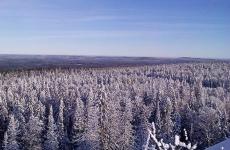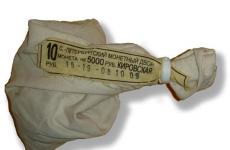Rustavi, Georgian SSR. Georgia Rustavi: where to be
Rustavi (რუსთავი) is the administrative center of Kvemo Kartli. Located 25 km southwest of Tbilisi.
Population - 116.4 thousand people
It is a city located on a plain, which is unusual for most other Georgian cities. Many people associate it only with an unattractive Soviet industrial city, without any interesting attractions. However, the history of the city is much more ancient than is commonly believed.
Story. The first settlements are from the Late Bronze Age. One of the first mentions dates back to the 4th century. b.c.e. The settlement was called OstanKalak (Persian Astan - province, region, Kalak - city).
There is a version that the appearance of the name Rustavi is associated with the name of King Trdat (late 4th century AD), during whose reign an irrigation canal was built. Ru (Georgian რუ) - in old Georgian this word meant an irrigation canal, Tavi (თავი) - in this case translated as main. The city becomes the administrative center of Kukheti.
Kukheti (Georgian: კუხეთი)- the ancient name of the region located between the Kura and Gombori ridges. Later, around the end of the 8th century. this region became part of the Kakheti Principality. Nevertheless, the name of the region existed until the 12th century.
During the reign of Vakhtang Gorgasali (5th century), a bishopric was established in Rustavi, which existed right up to the 13th century.
735 - destroyed by Mervan the Deaf.
In 1068, Georgia was invaded by the Seljuk Turks under the leadership of Sultan Alparsan.
In 1097, King David the Builder stopped paying tribute to the Seljuk Turks. In 1115 - Liberation of Rustavi.
In 1265, the troops of Berk Khan, the ruler of the Golden Horde, invaded the Caucasus. Rustavi was again destroyed to the ground by the troops of Tamerlane. After which Rustavi ceased to exist as a city.
And only at the beginning of the 20th century Rustavi was rebuilt. Metallurgical enterprises, chemical plants, as well as an important railway station on the Tbilisi-Baku branch appeared.
Today's Rustavi
. The modern city is divided by Kura into two parts - Old (Dzveli) Rustavi (Georgian: ძველი რუსთავი) and New (Akhali) Rustavi (Georgian: ახალი რუსთავი). The new city, located on the right bank, is entirely made up of block houses, common in residential areas of any Soviet city.
Supermarkets, shops, cafes, gas stations (Wissol) are concentrated in the new part of the city. There is something like a hotel in the area of the Shota Rustaveli monument, but nothing is known about prices and living conditions. Somehow I haven’t heard of tourists staying in this city.
How to get there
.
Minibuses run from several points. The fastest way to get to Rustavi is to take a minibus near the Varketili metro station . The minibus will descend from above, from the Tbilisi Sea. The fare is 1 GEL.
Minibuses were also seen walking along Kazbegi Street (formerly Pavlova). This street runs parallel to the avenue Vazha-Pshavela (Medical Institute metro station).
Attractions . Apart from Stalinist architecture, all attractions are concentrated in the southwestern part of the old city. There are no medieval temples or ancient buildings here (with the exception of the fortress). Almost all traces of ancient settlements are underground.
The two churches that were the first to be built in Rustavi are Cathedral named after King Vakhtang Gorgosal and a little further north - Annunciation Church, located on Tsereteli Street.
Painting of the external walls of the bell tower near the Annunciation Church
Across the road, 80 meters east of the cathedral, a canopy is visible in the middle of a grassy clearing that was once a park. Here, during archaeological excavations, the foundations of houses of the 4th century were found. and burial of the late period. This is the only “open-air museum”, apart from the fortress. Everything else that was once dug up by archaeologists has long been hidden under the foundations of modern houses.
There are several parks in Rustavi. Youth Park in the new city, City Park and Park of Culture and Recreation in old Rustavi. It seems that the contrast between the old and new city is manifested not only in terms of architecture, but also in the amount of greenery.
Park of Culture and Recreationon the western outskirts of the old city occupies the space between Kura and st. St. Nino, and smoothly turns into a forest park, which stretches south for 4 km. The territory of the park is currently very neglected - strange dilapidated buildings, overgrown areas. Since 2012, work has begun on its restoration - paths are being built, some construction work is underway in the area of the pond. Whether this is for the better, time will tell. However, despite the abandonment, now there is a very pleasant atmosphere here. There is even a certain advantage in this unkemptness. The general picture of detachment from the noise of the modern city is complemented by Rustavi Fortress in the southern part of the park.
Despite its apparent inexpressiveness, the fortress contains many interesting details - you just need to take a closer look. At least to the author of the article, the Rustavi fortress seemed much more interesting than the same Narikala in Tbilisi.
A poultry house was spotted not far from the entrance to the park. Opposite it is another interesting place. From the entrance to the left there is a fenced-off area where sculptors work. Various bas-reliefs on stone are made to order. Judging by the patterns, the main customer is the church. And very close to the workshop, the artists are clearly enjoying themselves - this corner of the park is decorated with absolutely surreal works.
If you walk from the central entrance to the park along the street. Odishariya, after 150 meters, you will see on the left side Rustavi Historical Museum. On one of the walls there is an inscription from Soviet times “Rustavi Museum of Local Lore”. Now it has historical status. The museum is a pleasant surprise. Despite the fact that no thorough excavations were carried out in Rustavi, the collection turned out to be impressive. The exhibits cover a fairly extensive period - from the Bronze Age to the Middle Ages. Here you can see dishes produced both in ancient Rustavi and beyond (for example, Byzantine), bronze and iron swords, axes, jewelry, medieval coins, sarcophagi and much more.
Prices: Ticket - 3 GEL. Excursion for 10 GEL (I recommend). Photography - 5 GEL (for 7 photos).
Which is located in the southeastern part of the country. Despite the fact that Rustavi is largely an industrial city, it also enjoys some popularity among tourists. The reasons for this are its convenient location, and also people traveling to Rustavi due to some of the attractions of the early Christian era that can be seen in the vicinity of the city. If you decide to travel around Georgia, find out everything about holidays in Rustavi in 2019, attractions and prices, from this article.
Brief historical background
In fact, it cannot be said that the history of the city is only the history of present-day Rustavi. In this area there once existed a great city, which is mentioned in the pages of chronicles; it was founded about 5 centuries BC. However, subsequently the glorious city was almost completely destroyed by Mongol troops.
Today's Rustavi is a very young city, especially by Georgian standards. Rustavi received city status again, since ancient times, in 1948, so there is practically nothing here that can be found in many other cities of Georgia. Most of the architectural buildings date back to the Soviet period or modern times; there are practically no ancient fortresses and other antiquities here, but this does not mean that they are not in the surrounding area.
The city of Rustavi is primarily known for its auto racing track, which was used back in Soviet times. In addition, the city has the academic ensemble Rustavi, which is famous both in Georgia and abroad, as it has visited about 50 different countries of the world with its concerts.
Rustavi is also known for its large car market, where a considerable number of different cars are sold every day at very competitive prices. This car market is popular not only in Georgia, but also in many other Caucasian countries, as prices are very low here, so many people tend to buy cars here. 
The population of Rustavi is 120 thousand people, the ethnic composition of the city is extremely diverse, in addition to Georgians, Russians, Ukrainians, Armenians, Azerbaijanis and representatives of many other nationalities live here.
Brief geographical information and climate
Rustavi is located in the southeastern part of the country, the city stands on the banks of the beautiful Kura River. It is very close - only ten kilometers.
The climate in the city is moderately warm, it is very pleasant at any time of the year, so the temperature in winter rarely drops below 5 degrees below zero. But still, the best period for a holiday in Rustavi is spring or summer; it is at this time of year that the most tourists come here. Summer weather will delight you with sun and warmth - around 25 degrees Celsius.
Rustavi on the map
Safety in Rustavi
As you know, Georgian cuisine is one of the most delicious in the world; kebabs, khinkali and many other dishes have been loved by many since childhood. However, only in Georgia can you try real Georgian cuisine, and in Rustavi, as in the country as a whole, there are all the opportunities for this.
In the city's motorcycle park you can watch the races, or rent a sports car with a driver and ride through the streets and surrounding areas at amazing speeds.
As for shopping, it is better to go to the capital for this - or, on the contrary, to the countryside (depending on what kind of shopping you want), however, in Rustavi you can find several Georgian boutiques, small shops and a market where you can buy groceries in that case , if you cook for yourself while traveling.
In Rustavi, as in almost all of Georgia, you will find wonderful natural landscapes, a wonderful climate and excellent cuisine, which can give you a pleasant impression of visiting this place. It cannot be said that this city is the best place to make it the main point of the route, however, among other cities, it is worth visiting - after all, it is different from other Georgian cities, and yet is part of the country.
A little more about the town in the video:
The Georgian city of Rustavi is located 25 kilometers from Tbilisi. This is the youngest city in modern Georgia. This year he turns only 60 years old. Why are children playing in a real airplane after lunch, adults learning the art of sculpting right in the park, and prisoners selling their works of applied art on the Internet?
Reason one. Take a trip back in time
About a half hour drive from Tbilisi, and you find yourself in a city that is a real museum of the Soviet era. In 1948, Rustavi officially appeared on the map of Georgia. A city of metallurgists, steelworkers, and chemists, it was the flagship of the heavy industry of Soviet Georgia for many years. The main thing, that is, the city-forming enterprise, is the Rustavi Metallurgical Plant.
The administrative building of a once thriving enterprise is a real pearl of Soviet architecture. The bas-relief alone is worth it! They say that Comrade Stalin himself gave instructions to the architects. In the first post-war five-year plan, the construction of such a giant as this plant was a matter of honor for a huge country. Everything had to be pompous and rich!
True, now almost nothing remains of the plant. It's just a huge territory. The enterprise began to fade after the collapse of the Soviet Union.
But tens of thousands of workers and engineers worked here at one time! They came to work from all over Georgia. The enterprise was one of the first in terms of the number of labor heroes and production shock workers.
“I came to this plant right after school,” says Doctor of Technical Sciences Pavel Tsereteli. – It was 1951, that is, just three years after the birth of the new city. At that time, only one blast furnace was operating at the enterprise. And years later, we began to produce more than three percent of the country’s entire heavy metallurgy production! The city was built together with the factory’s workshops.”
Reason two. Visit the largest pedestrian square
The largest city square in Georgia is located in the city of Rustavi. Moreover, it is pedestrian. The square is located in front of the city council building. Taking a selfie here is a must!
By the way, Rustavi is divided into two parts: new and old. And they are divided by the Kura River. The old one is Stalinist architecture. The new one is Khrushchev’s. Although you can also find high-rise buildings in the city.
However, lovers of the era of industrialization will be much more interested in visiting the outskirts, where they can enjoy almost surreal landscapes. These are abandoned railway stations, rusty carriages, frames of dilapidated buildings. Everything here looks like the set for a horror movie.
Reason three. Find the ruins of an ancient fortress and a clearing of mysterious sculptures
The city has not been lost in time and continues to live. Taking a breath of fresh air and strolling through the central park of Rustavi is another reason to visit the city. Here you can walk along the alley of umbrellas, where multi-colored umbrellas suspended three meters from the ground form a cheerful and colorful roof that moves in the wind.
Or you can wander into a clearing of mysterious sculptures. Here, muscular men, armed with special hammers, are working intently on a huge boulder. Having tied their heads with bandanas and wearing respirators so as not to breathe stone dust, they break off small fragments from a shapeless block of stone.
The fact is that every year an international symposium of sculptors is held in Rustavi. This is a master class when Georgian and foreign masters teach the secrets of monumental art to students of the Academy of Arts. The symposium ends, but the works remain in the park.
“For me, such a project is the first real opportunity to feel the stone,” says student Tamara Toidze. – Of course, we work in workshops, but believe me, being here and watching how experienced masters create their compositions is worth a lot. Every morning I come from Tbilisi with pleasure and look forward to the start of the creative day.”
A little further there is another time jump: the ruins of an ancient fortress. They are said to be at least 15 centuries old. The fact is that on the site of Rustavi there was once a great city - the capital of the kingdom of Kukheti. (Not to be confused with Kakheti).
Farmers lived here. Therefore, craftsmen built irrigation canals. In Georgian “ru” is translated as channel. And “tavi” is the head, the source. So, Rustavi is translated as the source of the canal. Now everything is clear.
“The kingdom went through different periods,” says archaeologist Mate Ahalaya. – There was a time when it included the lands of Kakheti and Kartli. Therefore the population was quite large. Wheat and grapes were grown, wine was made, and livestock farming was developed. And this fortress served as the center. And it was built on a plain, unlike many Georgian fortresses that stood on mountain tops.”
You can get acquainted with the past at the ethnographic museum located next to the park. Ancient manuscripts, maps, and archaeological finds are stored here. By the way, since the 8th century, representatives of the Rustaveli family lived in this territory. Therefore, there is a version that the great Georgian poet of the 12th – 13th centuries, the author of the epic “The Knight in the Skin of a Tiger” Shota Rustaveli, also comes from here.
“The first information about the ancient settlement on the site of Rustavi appeared in the chronicle “Krtlis Tskhovreba,” says museum director Nazibrola Pachikashvili. – This historical document indicates that the city was one of the oldest settlements in the region. However, during the period of unrest, from the 12th to the mid-17th century, it was under the yoke of foreign conquerors. Mongols, Seljuk Turks, Persians - whoever conquered these lands. Eventually, people began to leave them and went to the mountains to escape.”
By the beginning of the 19th century, according to sources, there was only desert in this place. Re-development of the territory began after the Great Patriotic War.
Reason four. Buy a souvenir in an unusual store
Prisoners of war also worked on the construction of Rustavi and enterprises located in the city. That is why so-called special institutions began to be built here, along with residential areas. Subsequently, Rustavi strict regime colonies appeared in their place. No, we do not advise tourists to come here. However, city guests can purchase souvenirs made by the hands of prisoners in a specialized store. Here's reason number four.
It seems that craftswomen can make anything from felted wool. Felt in Georgian is “teka”; many women have been able to handle it since childhood.
“I myself am from Western Georgia. Our grandmothers always made felt there and then decorated it. These products are now in fashion,” says prisoner Tamar Basharadze.
The works are exhibited in a small pavilion. Any souvenir shop can envy its assortment. Jewelry, panels, tapestries, paintings and icons. Everything was done by the hands of prisoners. At the same time, many of them still had nothing to do with needlework. For example, plastic surgeon Elena Gelashvili only held a surgical needle in her hands. Now he embroiders.
“The girls supported me, taught me how to do needlework, and now I happily spend hours working,” she says.
This work also brings income: the craftswomen’s products are sold online, and the money is credited to their personal accounts. The director of the women's colony, Nestan Verulashvili, one of the authors of the idea, herself sought permission from various authorities. Now she intends to move on.
“We want to open a bakery and a small cafe in our colony. After all, many of our prisoners know how to cook very well,” she told a MIR 24 correspondent. According to her, the most important thing is that women prisoners do not lose hope and are ready to return to society.
Reason five. Visit the kindergarten located on the plane
It was thanks to this old Yak-40 that the preschool institution in the city of Rustavi became known throughout Georgia. There are legends about how the aircraft, plowing the sky-high distances, ended up here. Some say it came and landed on a football field. Someone claims that it was written off, disassembled, and then reassembled, but for the flight of a child’s dream.
“We brought it here using a tractor. At night, when there was almost no movement, says kindergarten director Harry Chapidze. – When we were driving along the highway, like in the film “The Adventures of Italians in Russia,” the car drivers were in shock. And the residents of Rustavi, who saw this from their windows and told their neighbors this morning, were considered abnormal.”
The crew departs every day after afternoon tea. In the cabin, instead of seats, there are small tables and chairs, books and soft toys - everything that will be useful during the flight. Who is the passenger and who is the flight attendant is not important. The main thing is the unusual environment, which the kids love so much.
“They come to us, but don’t want to leave,” says teacher Maka Samkharadze. “Those who are older and have already flown on airplanes later come and say that they weren’t scared at all.” We don’t prohibit them from doing anything – they can touch and switch anything they want.”
High school student Saba Chapidze comes to take part in an impromptu flight right after school. Helps teachers and tries on his future profession. He dreams of becoming a pilot and has already decided: he will enroll in aviation.
“I often bring my classmates here,” he says. “They really like it too. Actually, I want classes to be held here for schoolchildren, say, in physics.”
The idea of leaving the plane on the territory of the kindergarten saved it from being melted down. Now the veteran is not only in perfect condition, but also brings joy to the children. Teachers say that after such a flight, children fall asleep better.
Each tourist will be able to discover Rustavi in his own way. By the way, this city is also called the automobile capital of Georgia. Since the largest car market in the country is located here. So if you decide, you can buy yourself a car and drive it further.
During Soviet times, mechanical engineering, heavy industry, metallurgy and other important strategic industrial complexes actively developed on the territory of Rustavi. Accordingly, as in most small cities in the post-Soviet space, a rather serious crisis occurred in Rustavi after the collapse of the Union. However, everything is gradually returning to normal and Rustavi is looking forward to prosperity, which they say is just around the corner.
How to get there
The best way to get to Rustavi is by plane from Moscow to Tbilisi and a short “bus tour” 25 kilometers to Rustavi.
Climate
The climate in Rustavi is quite moderate; in the coldest months in this Georgian city the thermometer does not rise above +7 degrees Celsius, and from the beginning of April the air begins to systematically warm up from +18 to +35 degrees. In autumn it gets “cold”, down to plus fifteen. Thus, the best time to visit Rustavi is spring and early summer, when there is no intense heat yet, but you don’t have to bring a triple sheepskin coat with you.
How to navigate
The city of Rustavi itself is conventionally divided by the Kura River into the right and left banks. Historically, the left bank began to be built up a little earlier and now represents a monument to Soviet reality in the open air. The left bank was developed at a more modern stage; in this part of the new city, more or less new buildings predominate, as well as houses, more popularly known as “Khrushchev buildings”.
The few guests of Rustavi usually use a visit to the southeastern part of the city as an excursion tour. Or rather, the southeastern suburbs, where most of the architectural heritage of the early Middle Ages is located.
David Gareji
Thus, a few tens of kilometers from Rustavi there is a fairly extensive complex of monasteries called David Gareji. In total, there are about two dozen cave monasteries in the rock today, some of which are still in operation. The main one of the entire monastery complex is rightfully considered the most monumental - the Lavra of St. David. All the cells are carved directly into the rocks, and ancient frescoes with images of holy persons of royal blood are still preserved on the walls. Queen Tamara occupies a prominent place in the list of Georgian saints, with whose reign the population of Georgia still associates the best years of their native state.
Bolnisi Zion
The Bolnii Zion is another major architectural heritage site of the era of early Georgian Christianity, the oldest temple on the territory of modern Georgia, built at the end of the fifth century AD, but perfectly preserved to this day. It is this temple that the majority of the indigenous population of Georgia respects most and rightfully considers it the main object of the heritage of their ancestors.
Rustavi cross
The highest point of Rustavi is located at an altitude of 762 meters, which can be reached by climbing a unique structure of Georgian engineers and architects - the Rustavi Cross. The entire ascent occurs without any special equipment and takes about forty-five minutes for an adult with normal weight and good health. From the height you can see the panorama of the Yagludzha ridge, large plains near the city and attractive Georgian landscapes.
Skip to navigation Skip to search
| City | |||
| cargo. რუსთავი | |||
|
|||
| 41°32′ N. w. 45°00′ E. d. | |||
| A country | Georgia | ||
|---|---|---|---|
| Region | |||
| Municipality | |||
| Chapter | Mamuka Chikovani | ||
| History and geography | |||
| Based | IV century | ||
| City with | 1948 | ||
| Square |
|
||
| Center height | 350 m | ||
| Timezone | UTC+4 | ||
| Population | |||
| Population | ▲ 126,000 people (2015) | ||
| National composition | Georgians, Azerbaijanis, Russians, Armenians, Ossetians | ||
| Confessional composition | Orthodox, Shiite Muslims, Sunni Muslims |
||
| Official language | Georgian | ||
| Digital IDs | |||
| Telephone code | +995 341 | ||
| Postcode | 370 | ||
| rustavi.gov.ge (Georgian) (English) |
|||
|
|
|||
Rustavi(Georgian რუსთავი) - a city in the southeast, located on the banks of a river 11 kilometers southeast of.
Population
As of January 1, 2016, the population of the city as a municipality was 126,000 residents, as of January 1, 2014 - 122,900 residents, as of January 1, 2005 - 115,500 residents.
According to the 1989 All-Union Population Census, 158,661 people lived in Rustavi. According to the 2002 census, the city's population was 116,384 people, at the beginning of 2008 - 117,300 people, at the beginning of 2011 - 120,800 people.
| Georgians | 114819 | 91,78% |
| Azerbaijanis | 4661 | 3,73% |
| Armenians | 1965 | 1,57% |
| Russians | 1459 | 1,17% |
| Ossetians | 545 | 0,44% |
| Ukrainians | 315 | 0,25% |
| Yazidis | 239 | 0,19% |
| Greeks | 166 | 0,13% |
| other | 934 | 0,74% |
| Total | 125103 | 100,00 % |
Story
Rustavi (“beginning of the irrigation canal” translated from Georgian) is one of the oldest cities that played a significant role in its history. Georgian historian of the 11th century. Leontiy Mroveli mentions Rustavi among the fortresses that resisted the troops of Alexander the Great. This allows us to date the foundation of Rustavi to the 5th-4th centuries. BC e.
In his work “The Lives of the Kings,” Leonti Mroveli writes that King Trdat, the 28th king of Kartli (late 4th century BC), built a church and a canal. Academician Nikolos Berdzenishvili writes that since then Rustavi has been regarded as an important administrative center.
During the reign of Vakhtang Gorgasali (5th century), Rustavi played a prominent role in the political life of Georgia. A bishopric was established in Rustavi, which lasted until the 13th century, when it was destroyed by the Mongols. Then the bishopric was transferred to Martkopi, however, the bishop of Martkopi bore the title of Rustavi (Rustaveli).
The political significance of Rustavi is also confirmed by archaeological research in the Rustavi fortress; ruins of structures dating back to the 4th and 5th centuries were discovered. n. e.
In 1068, Georgia was invaded by the Seljuk Turks under the leadership of Sultan Alp Arslan.
In 1097, David the Builder stopped paying tribute to the Seljuk Turks. In 1104 he united Kakheti-Hereti. In 1105, he defeated the army of the Emir of Ganja. Only Tbilisi, Rustavi, Samshvilde, Somkhiti and Agarani remained in the hands of Muslims. In 1110, David took Samshvilde, in 1115 - Rustavi, in 1122 - Tbilisi.
In 1265, the troops of Berk Khan, the ruler of the Golden Horde, invaded the Caucasus. Georgia fought simultaneously with two enemies - Iran and the Mongols. Rustavi was again destroyed to the ground by the troops of Tamerlane.
During industrialization, Rustavi became an important industrial center. Metallurgical enterprises, chemical plants, as well as an important railway station on the Tbilisi-Baku branch appeared. About 90 large and medium-sized industrial enterprises were built in Rustavi.
The main industrial center was the Rustavi Metallurgical Plant, built in 1941-1950. for the purpose of processing iron from neighboring Azerbaijan. The workers were gathered from all over the republic, including the poorest agricultural areas of Western Georgia. Not only metallurgy developed, but also the production of cement, chemicals and synthetic fibers. On August 30, 1944, the first local newspaper appeared - “Metallurgiisatvis” (translated from Georgian - “For Metallurgy”). In 1948, new streets appeared, the first of which was named after the Komsomol, the second - in honor of the builders of Rustavi, and the third - after the ancient settlement of Bostan-Kalaki.
On January 19, 1948, by decree of the Supreme Council of the Georgian SSR, Rustavi was given the status of a city of republican significance. On April 27, 1950, the entire city celebrated the production of the first industrial steel in Georgia. German prisoners of war also took part in the construction of the city.
Modern Rustavi is divided into two parts - Dzveli Rustavi (Old Rustavi) and Akhali Rustavi (New Rustavi). The first is dominated by Stalinist architecture, while the second is dominated by Soviet block construction. The collapse of the Soviet Union in 1991 was a disaster for Rustavi, as it destroyed the integration into the Soviet economy that ensured the activities of the city-forming enterprises. Most industries were closed and 65% of the population lost their jobs, leading to increased crime and poverty. The number of residents fell from 160,000 in the mid-1990s to 116,000 in 2002.
New York artist Greg Lindquist documented the destruction of Rustavi's cement factories in his paintings and installations (Nonpasts, 2010).
The last of the stationary tracks built in the USSR for circuit racing. The first races took place at the end of 1979. Stages of the USSR championships were held at the Rustavi autodrome 11 times (1979-1989). After the collapse of the USSR, the route was not reconstructed and the road surface fell into disrepair. In 2009, a plot of land with a ruined grandstand and dilapidated road surface was purchased at a state auction by the private company Stromos, which is reconstructing the complex according to the requirements of Category II FIA.
Culture
The Georgian State Academic Ensemble "Rustavi" was founded in 1968. Over 35 years, he conducted more than 3,000 concerts and successfully performed in more than 50 countries around the world.
Economy
In August 2007, the first supermarket of the national network “Populi” opened in Rustavi.
The city is home to the Carriage Building Holding, which includes the Electric Carriage Repair Plant, which is mainly engaged in the repair of carriages, the Carriage Building Company, a new enterprise mainly focused on the construction of carriages, and the Rustavi Metallurgical Plant, which mainly produces parts for carriages.
The city also houses the largest automobile market in the Caucasus, which is a key point for the re-export of cars from Georgia to neighboring countries, as well as many enterprises for repair, maintenance and tuning of cars.
Transport
A trolleybus system operated from 1971 to 2009. Nowadays public transport is represented by minibuses.
Climate
| Month | Jan. | Feb. | March | April | May | June | July | August | Sep. | Oct. | November | Dec. | Year |
| Average temperature [°C] | 6 | 7.7 | 12,9 | 18,2 | 23,4 | 27.5 | 30.8 | 30.8 | 26.0 | 19.8 | 12.9 | 7.5 | 18.7 |
| Precipitation (mm) | 19 | 26 | 30 | 51 | 78 | 76 | 45 | 48 | 36 | 38 | 30 | 21 | 498 |
Twin Cities
Chapters
- Mamuka Chikovani
Gallery

Notes
- Population of municipalities and regions of Georgia at the beginning of the year in 2000-2016. National Statistical Service of Georgia. Retrieved April 29, 2016.(English)
- Demoscope Weekly - Application. Directory of statistical indicators.
- Ethnic composition of Georgia according to the 2002 census (English)
Links
- Official website of the city
- Rustavi - a short guide.
- // Dictionary of modern geographical names / Rus. geogr. about. Moscow center; Under general ed. acad. V. M. Kotlyakova. Institute of Geography RAS. - Ekaterinburg: U-Factoria, 2006.
- Motorsport in the USSR. Rustavi race track
- Professional Motorsport World, April-June 2011



